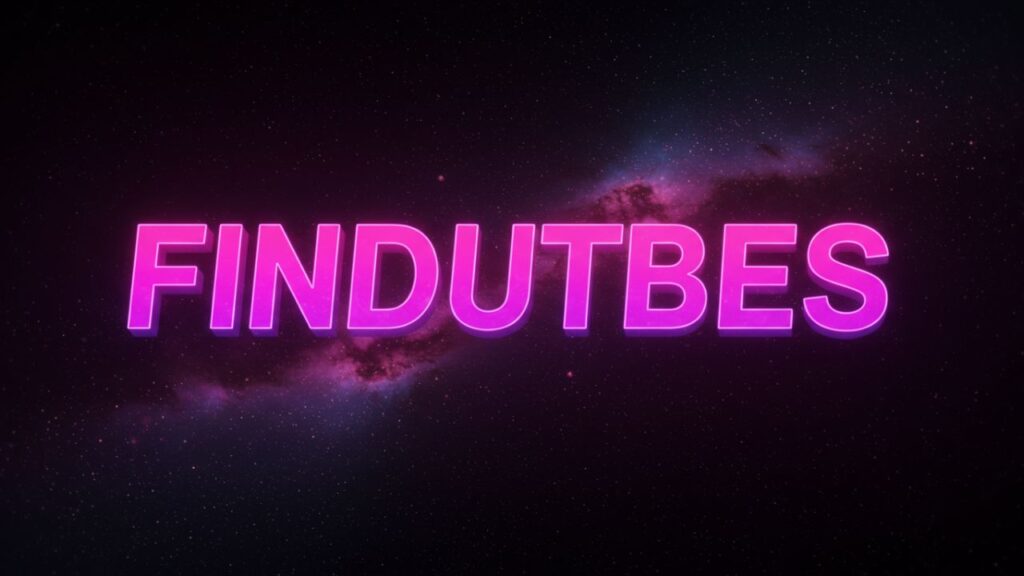Introduction: What Is Findutbes?
In today’s digital age, new terms and technologies emerge rapidly. One such term that has captured curiosity is Findutbes. But what exactly is Findutbes, and why is it gaining traction? In this article, we’ll delve into the origins, uses, and practical tips for Findutbes, ensuring you have a clear, human‑friendly, and up‑to‑date understanding.
The Origins and Meaning
The term Findutbes is relatively new and not well documented in mainstream sources yet. Many early mentions appear in niche forums and social media threads where users speculate about its purpose. Some interpret Findutbes as a fusion of “find” + “utub(e)s,” suggesting tools for discovering videos or content, though that remains unconfirmed.
Possible Interpretations
-
Content Discovery Tool
One of the most commonly proposed ideas is that is a tool (or concept) for discovering or indexing videos across platforms. -
Search Enhancement Plugin
Others suggest may refer to a plugin or extension that enhances search capabilities for multimedia content. -
Brand or Project Name
It’s also possible Findutbes is a brand or project in the digital space, not yet widely publicized.
Because the term is still evolving, this guide leans toward conceptual clarity, practical suggestions, and future insights.
Why the Buzz Around Findutbes?
1. Novelty and Curiosity
When a new term surfaces, especially online, it piques curiosity. People search, share, and analyze it, which creates momentum.
2. Potential for Innovation
If Findutbes indeed involves improved content search, discovery, or indexing, its potential for innovation is high—especially in a world saturated with videos and multimedia.
3. Community Conversations
Forums, discussion boards, and social media are breeding grounds for speculation. As more users talk about Findutbes, ideas and interpretations sharpen.
How Could Findutbes Work?
While there’s no official documentation, we can hypothesize how might operate:
A. Metadata Analysis
By analyzing metadata (titles, descriptions, tags) from videos and multimedia, could surface relevant content more intelligently.
B. User Behavior Tracking
Through understanding how users search, click, and interact, could refine its recommendations and filters.
C. Cross‑Platform Aggregation
It might gather content from various platforms (YouTube, Vimeo, social media) into unified search results.
D. AI & Machine Learning
AI models could underpin Findutbes, using natural language understanding, visual recognition, or recommendation systems.
Practical Uses (Hypothetical)
Even though Findutbes is still speculative, imagining how it might be used helps clarify its value. Here are possible scenarios:
-
Enhanced Video Search: Users could find exactly what they need (tutorials, lectures, entertainment) faster.
-
Content Discovery for Niche Topics: Hard-to-find or obscure content becomes easier to locate.
-
Educational Research: Students and academics might benefit by discovering specialized lectures or talks.
-
Marketing Intelligence: Marketers could track video trends or gaps in content using Findutbes insights.
-
Personalized Recommendations: Based on behavior and preferences, users receive relevant video suggestions.
Challenges and Considerations
While exciting, Findutbes would likely face hurdles:
1. Data Access & APIs
Accessing metadata across multiple video platforms may require permissions, API access, or scraping—some of which may be restricted.
2. Copyright & Intellectual Property
Indexing or providing links to videos may raise legal concerns around copyright, especially for protected or paid content.
3. Scalability
Handling enormous amounts of multimedia data is resource-intensive. Efficient architecture and cloud infrastructure would be essential.
4. Spam, Misinformation & Quality Control
Filtering low-quality or misleading content is critical to maintain trust in outputs.
5. Privacy & Ethics
Tracking user behavior must respect privacy guidelines and data protection laws.
Steps to Get Started with Findutbes (When It Arrives)
Until Findutbes becomes a concrete tool or platform, here are steps you can take to stay ahead:
-
Stay Informed
Monitor tech news, blogs, and forums for any official updates. -
Learn Related Technologies
Study content indexing, video metadata, APIs of video platforms, and AI recommendation techniques. -
Experiment with Prototypes
Try building mini “discovery engines” for video content using existing APIs — this gives you hands‑on insight. -
Network with Communities
Engage in developer, SEO, or multimedia forums discussing or related tools. -
Collect Feedback & Iterate
When testing, get user feedback and refine how your “Findutbes” concept might work.
SEO, Content Strategy & Findutbes
If Findutbes becomes a thing, content creators, marketers, and SEO professionals will need to adapt:
-
Optimize Video Metadata: Titles, descriptions, tags, transcripts — all will matter even more for search and discovery via Findutbes.
-
Structured Data & Schema Markup: Use schema.org video markup to help indexing.
-
Transcripts & Captions: Text content tied to video makes content more discoverable and searchable.
-
Cross‑Platform Distribution: Host videos in places accessible to Findutbes aggregation (if public-friendly).
-
Quality & Authority: High-quality content will stand out, so invest in depth, originality, and trust signals.
The Future Outlook
If Findutbes evolves from speculative concept to real platform, here’s what we may expect:
-
Integration with Search Engines: Mainstream search engines might incorporate results into their own listings.
-
Monetization Models: Freemium access, premium analytics, or subscription-based services could emerge.
-
Third‑Party Extensions & Plugins: Browser or app extensions might let users harness Findutbes in daily browsing.
-
APIs for Developers: Developers may build tools, dashboards, or apps using Findutbes backend services.
-
Partnerships with Content Creators: Video creators might tag or optimize content specifically for visibility.
Conclusion
Though Findutbes is still emerging and somewhat mysterious, its potential is clear: enhancing how we discover, index, and engage with video and multimedia content. Whether becomes a full platform, a brand, or remains a concept, being informed and proactive gives you a head start.
Watch for official announcements, experiment with related technologies today, and think about how could reshape discovery. The more prepared you are, the more you’ll benefit when becomes real.





